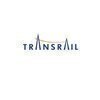Filter interviews by
Shapoorji Pallonji Group Safety Officer Interview Questions and Answers
10 Interview questions
Control measures are strategies implemented to minimize risks and ensure safety in various environments.
Control measures can be administrative, engineering, or personal protective equipment (PPE).
Example: Installing guardrails on scaffolding to prevent falls.
Example: Conducting regular safety training sessions for employees.
Example: Using PPE like helmets and gloves to protect workers from hazards.
Safety is the condition of being protected from harm, danger, or injury in various environments.
Safety involves risk management to prevent accidents and injuries.
Examples include using personal protective equipment (PPE) in construction.
Safety protocols are essential in workplaces to ensure employee well-being.
Regular safety training helps in maintaining awareness and preparedness.
ELCB detects earth faults, while RCCB protects against earth leakage currents, enhancing electrical safety.
ELCB (Earth Leakage Circuit Breaker) detects earth faults and disconnects the circuit.
RCCB (Residual Current Circuit Breaker) monitors the balance of current between live and neutral wires.
ELCB is mainly used in older installations; RCCB is more common in modern electrical systems.
Example: ELCB trips when it ...
An accident is an unexpected and unintentional event that causes harm or damage.
Accidents can happen in any setting, including workplaces, homes, and on the road.
They can result in physical injuries, property damage, or both.
Accidents can be caused by human error, equipment failure, or environmental factors.
Examples of accidents include slips and falls, car crashes, and machinery malfunctions.
LMR full from refers to a situation where the Land Mobile Radio system is at maximum capacity.
LMR full from means that the Land Mobile Radio system is unable to accommodate any more users or communications.
This can occur when all available channels or frequencies are in use.
It may result in communication delays or the inability to establish new connections.
LMR full from can impact the effectiveness of emergency re...
An incident is an unplanned event that results in injury, damage, or loss.
Incidents can occur in any workplace or environment
They can range from minor incidents such as slips and falls to major incidents such as explosions or fires
Incidents should be reported and investigated to prevent future occurrences
Proper safety measures and training can help prevent incidents from happening
Safety is the state of being protected from harm, danger, or injury.
Safety involves identifying and assessing potential hazards
It requires implementing measures to prevent or mitigate those hazards
It involves training and educating individuals on safe practices
Safety is a continuous process that requires ongoing evaluation and improvement
Examples of safety measures include wearing personal protective equipment, fo...
I'm sorry, but the question is not clear and seems to be incomplete.
Please provide more context or rephrase the question.
Without proper information, I cannot provide a relevant answer.
Kindly clarify the question so that I can assist you better.
Shutting down work is a crucial safety measure to prevent accidents and ensure the well-being of workers.
Shutting down work may be necessary in case of an imminent danger or hazard that cannot be immediately controlled.
It is important to have clear protocols and procedures in place for shutting down work in different scenarios.
Examples of situations that may require work shutdown include gas leaks, chemical spills...
NEBOSH stands for the National Examination Board in Occupational Safety and Health, focusing on health and safety qualifications.
NEBOSH was established in 1979 to provide health and safety qualifications.
It offers various certifications, including the NEBOSH National General Certificate.
The qualifications are recognized globally, enhancing career prospects in safety roles.
NEBOSH courses cover topics like risk asse...
Shapoorji Pallonji Group Safety Officer Interview Experiences
7 interviews found
- Q1. What is the difference between ELCB and RCCB ?
- Ans.
ELCB detects earth faults, while RCCB protects against earth leakage currents, enhancing electrical safety.
ELCB (Earth Leakage Circuit Breaker) detects earth faults and disconnects the circuit.
RCCB (Residual Current Circuit Breaker) monitors the balance of current between live and neutral wires.
ELCB is mainly used in older installations; RCCB is more common in modern electrical systems.
Example: ELCB trips when it sense...
- Q2. What is Safety definition?
- Ans.
Safety is the condition of being protected from harm, danger, or injury in various environments.
Safety involves risk management to prevent accidents and injuries.
Examples include using personal protective equipment (PPE) in construction.
Safety protocols are essential in workplaces to ensure employee well-being.
Regular safety training helps in maintaining awareness and preparedness.

(1 Question)
- Q1. Salary, location jonlb
(1 Question)
- Q1. Work permit, checklist, hira , JSA
I appeared for an interview before Jun 2024, where I was asked the following questions.
- Q1. What knowledge required to become a Safety Officer?
- Ans.
A Safety Officer must possess knowledge in regulations, risk assessment, and emergency response to ensure workplace safety.
Understanding of OSHA regulations and compliance requirements.
Knowledge of hazard identification and risk assessment techniques.
Familiarity with safety training programs and employee education.
Ability to conduct safety audits and inspections.
Experience with emergency response planning and drills.
- Q2. How can you effectively manage and treat your workforce?
- Ans.
Effective workforce management involves proactive safety measures, communication, and continuous training to ensure a safe work environment.
Conduct regular safety training sessions to keep employees informed about safety protocols and emergency procedures.
Implement a reporting system for near misses and hazards, encouraging employees to voice concerns without fear of reprisal.
Perform regular safety audits and inspectio...
- Q3. What is control measure.
- Ans.
Control measures are strategies implemented to minimize risks and ensure safety in various environments.
Control measures can be administrative, engineering, or personal protective equipment (PPE).
Example: Installing guardrails on scaffolding to prevent falls.
Example: Conducting regular safety training sessions for employees.
Example: Using PPE like helmets and gloves to protect workers from hazards.
Interview Preparation Tips
I applied via Naukri.com and was interviewed in Apr 2022. There were 4 interview rounds.

How to implement workers to do work in a Safety process.
How to minimize and control hazard.
(2 Questions)
- Q1. Salary discussion and about previous work.
- Q2. How much expection about salary.
Interview Preparation Tips
- About safety hazard.
I applied via Walk-in and was interviewed in Nov 2021. There was 1 interview round.
Interview Questionnaire
21 Questions
- Q1. HIRA full from
- Ans.
HIRA stands for Hazard Identification and Risk Assessment.
HIRA is a systematic process of identifying potential hazards and analyzing the associated risks.
It involves identifying the hazards, assessing the risks, and implementing control measures to mitigate the risks.
HIRA is an important tool for safety officers to ensure the safety of employees and the workplace.
Examples of hazards that can be identified through HIRA...
- Q2. ISO stander
- Q3. IBOSh full from
- Ans.
I'm sorry, but the question is not clear and seems to be incomplete.
Please provide more context or rephrase the question.
Without proper information, I cannot provide a relevant answer.
Kindly clarify the question so that I can assist you better.
- Q4. Safety belt lanyard length
- Q5. NEbosh full from
- Ans.
NEBOSH stands for the National Examination Board in Occupational Safety and Health, focusing on health and safety qualifications.
NEBOSH was established in 1979 to provide health and safety qualifications.
It offers various certifications, including the NEBOSH National General Certificate.
The qualifications are recognized globally, enhancing career prospects in safety roles.
NEBOSH courses cover topics like risk assessmen...
- Q6. Audit report
- Q7. Job related
- Q8. Crane load capacity
- Q9. LMR full from
- Ans.
LMR full from refers to a situation where the Land Mobile Radio system is at maximum capacity.
LMR full from means that the Land Mobile Radio system is unable to accommodate any more users or communications.
This can occur when all available channels or frequencies are in use.
It may result in communication delays or the inability to establish new connections.
LMR full from can impact the effectiveness of emergency respons...
- Q10. Work to permit
- Q11. EHS meeting
- Q12. Road safety
- Q13. Electrical safety
- Q14. Fire hazard
- Q15. What is safety
- Ans.
Safety is the state of being protected from harm, danger, or injury.
Safety involves identifying and assessing potential hazards
It requires implementing measures to prevent or mitigate those hazards
It involves training and educating individuals on safe practices
Safety is a continuous process that requires ongoing evaluation and improvement
Examples of safety measures include wearing personal protective equipment, followi...
- Q16. Shut down work
- Ans.
Shutting down work is a crucial safety measure to prevent accidents and ensure the well-being of workers.
Shutting down work may be necessary in case of an imminent danger or hazard that cannot be immediately controlled.
It is important to have clear protocols and procedures in place for shutting down work in different scenarios.
Examples of situations that may require work shutdown include gas leaks, chemical spills, str...
- Q17. CSR activities
- Q18. Foundation work relate
- Q19. Severity rate
- Q20. What is accident
- Ans.
An accident is an unexpected and unintentional event that causes harm or damage.
Accidents can happen in any setting, including workplaces, homes, and on the road.
They can result in physical injuries, property damage, or both.
Accidents can be caused by human error, equipment failure, or environmental factors.
Examples of accidents include slips and falls, car crashes, and machinery malfunctions.
- Q21. What is incident
Interview Preparation Tips
I applied via Referral and was interviewed before Nov 2020. There was 1 interview round.
Interview Questionnaire
3 Questions
- Q1. About my Self
- Q2. Height work safety & Control measures
- Ans.
Height work safety involves implementing control measures to prevent falls and injuries.
Conducting a risk assessment before starting any work at height
Providing appropriate training and equipment for workers
Implementing a fall protection plan
Regularly inspecting equipment and ensuring it is in good condition
Establishing clear communication and emergency procedures
Examples of control measures include guardrails, safety ...
- Q3. Engineering control, legal control , administrative control, ppe
Interview Preparation Tips
I applied via Referral and was interviewed before Nov 2020. There was 1 interview round.
Interview Questionnaire
2 Questions
- Q1. Height work safety &Control measures
- Q2. Administrative control, Engineering control, legal control
Interview Preparation Tips
Top trending discussions






Interview questions from similar companies

I applied via Naukri.com and was interviewed in Dec 2017. There were 4 interview rounds.
Interview Questionnaire
3 Questions
- Q1. Tell me about your self
- Ans.
Experienced safety officer with a background in industrial safety protocols and emergency response procedures.
Over 5 years of experience in implementing safety measures in industrial settings
Proficient in conducting safety audits and inspections to ensure compliance with regulations
Skilled in developing and implementing safety training programs for employees
Strong knowledge of emergency response protocols and procedure...
- Q2. Duties of safety Officer
- Ans.
Safety Officers are responsible for ensuring the safety of employees in the workplace by implementing safety protocols and procedures.
Develop and implement safety policies and procedures
Conduct regular safety inspections and audits
Investigate accidents and incidents to determine root causes
Provide safety training to employees
Ensure compliance with safety regulations and standards
Maintain safety records and reports
- Q3. Working improvement
Interview Preparation Tips
Experience: Written test
General Tips: Expended
Skills: Self-Awareness
Duration: <1 week

I applied via Naukri.com and was interviewed before Aug 2020. There were 3 interview rounds.
Interview Questionnaire
2 Questions
- Q1. Intro, safety officer roles and responsibilities
- Q2. Co gas limit
- Ans.
The CO gas limit is the maximum allowable concentration of carbon monoxide in the air.
The CO gas limit is set by regulatory agencies to protect human health and safety.
The limit varies depending on the location and type of facility.
For example, the Occupational Safety and Health Administration (OSHA) has set a permissible exposure limit (PEL) of 50 parts per million (ppm) for an 8-hour workday.
In residential homes, the...
Interview Preparation Tips

Safety Officer Interview Questions & Answers
Larsen & Toubro Limitedposted on 12 Jun 2020
Interview Questionnaire
2 Questions
- Q1. About work experience. i.e HIRA,SOP,
- Q2. Basis knowledge.
Shapoorji Pallonji Group Interview FAQs
Tell us how to improve this page.
Shapoorji Pallonji Group Interviews By Designations
- Shapoorji Pallonji Group Graduate Engineer Trainee (Get) Interview Questions
- Shapoorji Pallonji Group Senior Engineer Interview Questions
- Shapoorji Pallonji Group Senior Civil Engineer Interview Questions
- Shapoorji Pallonji Group Deputy Manager Interview Questions
- Shapoorji Pallonji Group Billing Engineer Interview Questions
- Shapoorji Pallonji Group Construction Engineer Interview Questions
- Shapoorji Pallonji Group Safety Officer Interview Questions
- Shapoorji Pallonji Group Site Engineer Interview Questions
- Show more
Interview Questions for Popular Designations
Overall Interview Experience Rating
based on 13 interview experiences
Difficulty level
Duration
Safety Officer Interview Questions from Similar Companies
Shapoorji Pallonji Group Safety Officer Reviews and Ratings
based on 100 reviews
Rating in categories
|
Deputy Manager
680
salaries
| ₹5.2 L/yr - ₹18 L/yr |
|
Senior Engineer
429
salaries
| ₹4 L/yr - ₹12 L/yr |
|
Construction Engineer
298
salaries
| ₹3 L/yr - ₹9 L/yr |
|
Civil Engineer
275
salaries
| ₹2 L/yr - ₹8.9 L/yr |
|
Safety Officer
230
salaries
| ₹1.5 L/yr - ₹8.4 L/yr |

Larsen & Toubro Limited

Tata Projects

Kalpataru Projects International

Alstom Transportation
- Home >
- Interviews >
- Shapoorji Pallonji Group Interview Questions
















